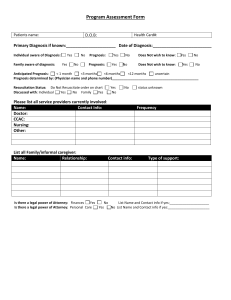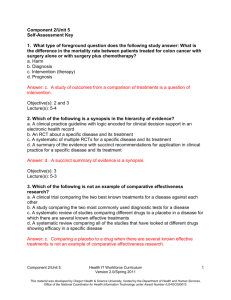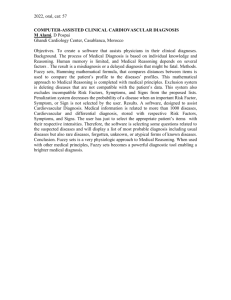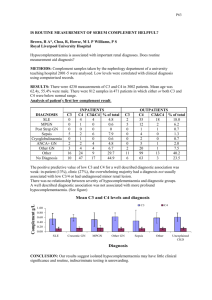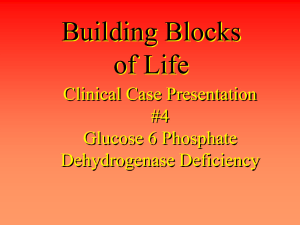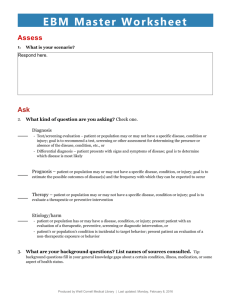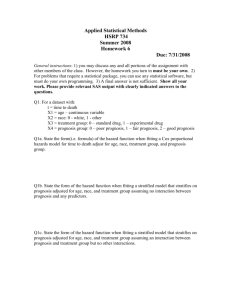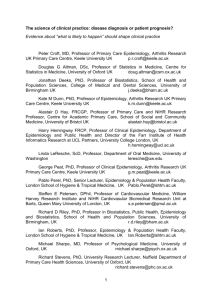Clinical question identification homework
advertisement
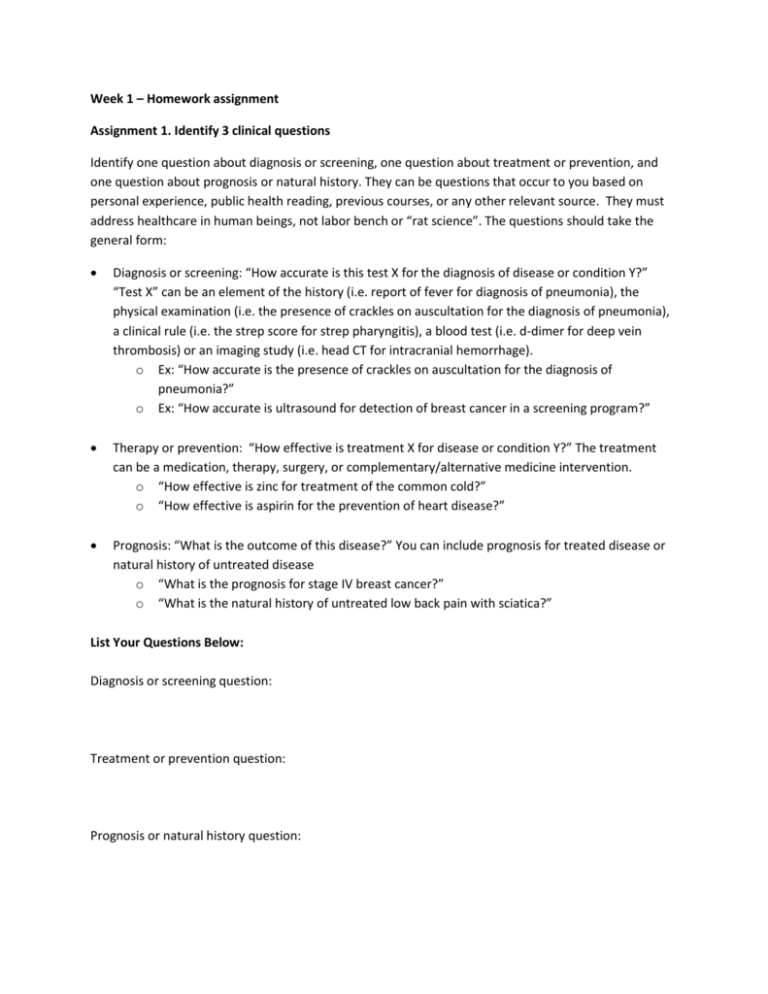
Week 1 – Homework assignment Assignment 1. Identify 3 clinical questions Identify one question about diagnosis or screening, one question about treatment or prevention, and one question about prognosis or natural history. They can be questions that occur to you based on personal experience, public health reading, previous courses, or any other relevant source. They must address healthcare in human beings, not labor bench or “rat science”. The questions should take the general form: Diagnosis or screening: “How accurate is this test X for the diagnosis of disease or condition Y?” “Test X” can be an element of the history (i.e. report of fever for diagnosis of pneumonia), the physical examination (i.e. the presence of crackles on auscultation for the diagnosis of pneumonia), a clinical rule (i.e. the strep score for strep pharyngitis), a blood test (i.e. d-dimer for deep vein thrombosis) or an imaging study (i.e. head CT for intracranial hemorrhage). o Ex: “How accurate is the presence of crackles on auscultation for the diagnosis of pneumonia?” o Ex: “How accurate is ultrasound for detection of breast cancer in a screening program?” Therapy or prevention: “How effective is treatment X for disease or condition Y?” The treatment can be a medication, therapy, surgery, or complementary/alternative medicine intervention. o “How effective is zinc for treatment of the common cold?” o “How effective is aspirin for the prevention of heart disease?” Prognosis: “What is the outcome of this disease?” You can include prognosis for treated disease or natural history of untreated disease o “What is the prognosis for stage IV breast cancer?” o “What is the natural history of untreated low back pain with sciatica?” List Your Questions Below: Diagnosis or screening question: Treatment or prevention question: Prognosis or natural history question: Assignment 1. Grading rubric Points Three questions submitted 1.0 Three questions submitted, one diagnosis or screening, one treatment or prevention, and one prognosis or natural history in appropriate format 2.0 Total: 2.0 Assignment 2. Threshold model exercise About 20% of patients presenting to the Athens Regional Medical Center emergency department with chest pain have an acute myocardial infarction (AMI, also known as a “heart attack”) as the cause. If the diagnosis is missed, the patient is likely to suffer greater disability and may die. At what percentage likelihood of AMI would you be comfortable ruling out the diagnosis and sending the patient home? At what percentage would you be comfortable initiating treatment, which consists of thrombolytic agents that will cause a stroke in about 1 in 50 patients? Indicate these values on the skeleton below and label as the test threshold, treatment threshold, and pretest probability. HINT: the thresholds should not be 0% or 100%, because you are never 100% certain in medicine. The percentage that you choose matters less than correctly labeling them, and that they are in a logical relationship to each other. 0% 5 0% 100% You order a troponin blood test on the patient. A patient with a normal troponin blood test has a 1% likelihood of AMI. A patient an abnormal (elevated) troponin has a 60% chance of AMI. Indicate this on the diagram below, along with the test threshold, pretest probability, and treatment threshold from above. 0% 5 0% 100% Based on the above threshold model, what should you do if the patient has a normal troponin blood test? What should you do if the test is abnormal? Assignment 2. Grading rubric Points Pretest probability, test threshold, and treatment threshold correctly placed on diagram 1.0 Post-test probabilities correctly placed on diagram 1.0 Correct interpretation of what to do with positive and negative tests 1.0 Total: 3.0
